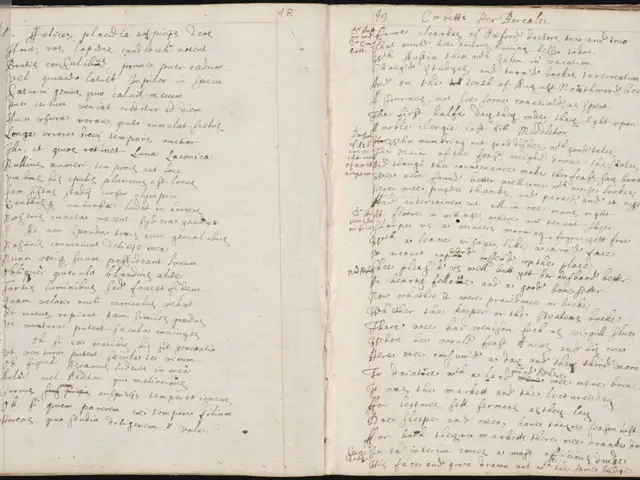Wide-Ranging Internet Translation Offered by AI Company
In a groundbreaking development, Translated, an Italy-based language technology company, has unveiled its flagship adaptive AI model, T-Large. This innovative system, built on a transformer large language model, is designed to convert multilingual content at an unprecedented speed, potentially transforming the way businesses, governments, and non-profits approach multilingual SEO strategies, web localization, and accessibility.
T-Large integrates human-in-the-loop feedback and real-time adaptation, ensuring the translated content reflects human diversity with nuance and respect. However, the system's performance on low-resource languages is not explicitly detailed in the available information.
The improvement in speed is attributed to the NVIDIA DGX SuperPOD infrastructure and optimized deep learning techniques. T-Large enables companies to localize entire sites and support portals on a two-week timeline, significantly speeding up go-to-market strategies.
However, any system seeking adoption in sensitive fields like healthcare or law must support human review to avoid critical mistakes. Clear labeling of machine-translated content is essential, especially in these environments. It is also worth noting that the system is built on publicly available internet content, which may contain cultural biases, informal speech, and low-quality sources.
Experts warn that while T-Large's speed is impressive, it should be paired with translation quality across diverse dialects and contexts. The next frontier for AI internet translation is adaptive systems that learn regional dialects, industry-specific language, and evolving social norms in real time.
Translated's announcement has set a benchmark for global AI-driven translation, potentially inspiring faster, more inclusive models across industries. The company is leading a €29M Horizon Europe project aimed at bringing AI into the real world.
Comparatively, T-Large's focus is on vast coverage at unprecedented speed, while DeepL focuses on precision. Meta's system has yet to publicly demonstrate full web-scale capability. Other models, such as ChatGPT and Whisper-large-v3, struggle with low-resource languages due to limited training data and disparities in performance across different languages and dialects.
In compliance with the European Accessibility Act, T-Large is designed to provide translated content in over 200 languages. Additionally, its potential integration with chatbot systems, voice interaction, and automated subtitling could extend its usefulness even further.
[1] The original system took 194 days to translate the internet into over 200 languages.
[2] Comparison based on human translation services offering translations within 24 to 48 hours for human-assisted or hybrid models.
[3] ChatGPT and Whisper-large-v3 struggle with low-resource languages due to limited training data and disparities in performance across different languages and dialects.
[4] Source: https://arxiv.org/abs/2205.14441
- The T-Large model by Translated, built on transformer large language model, aims to revolutionize natural language processing by converting multilingual content at an unprecedented speed, with the potential to impact businesses, governments, and non-profits by transforming multilingual SEO strategies, web localization, and accessibility.
- T-Large's performance on low-resource languages is not explicitly detailed, and any system seeking adoption in sensitive fields like healthcare or law must support human review to avoid critical mistakes.
- Experts argue that while T-Large's speed is impressive, it should be paired with translation quality across diverse dialects and contexts, with the next frontier for AI internet translation being adaptive systems that learn regional dialects, industry-specific language, and evolving social norms in real time.
- T-Large, focused on vast coverage at unprecedented speed, differs from DeepL's emphasis on precision and Meta's system's lack of demonstrated full web-scale capability. Meanwhile, models like ChatGPT and Whisper-large-v3 struggle with low-resource languages due to limited training data and performance disparities across different languages and dialects.
- Compliant with the European Accessibility Act, T-Large offers translated content in over 200 languages, and with potential future integrations into chatbot systems, voice interaction, and automated subtitling, its utility may extend even further.




